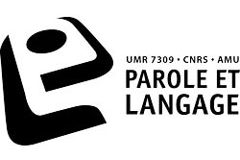
« Grammatical class modulates the (left) inferior frontal gyrus within 100 milliseconds when syntactic context is predictive » Scientific Reports – Nature
Kristof Strijkers (a), Valerie Chanoine (b), Dashiel Munding (c), Anne-Sophie Dubarry (a), Agnès Trébuchon (d), Jean-Michel Badier (d) & F.-Xavier Alario (c)
______________
« Cortical Dynamics of Semantic Priming and Interference During Word Production: An Intracerebral Study » Journal of Cognitive Neuroscience
Royce Anders (a), Anaïs Llorens (b), Anne-Sophie Dubarry (c), Agnès Trébuchon (d), Catherine Liégeois-Chauvel (e), F.-Xavier Alario (f)
A lire aussi
En quoi l’intonation révèle-t-elle les biais présents dans les questions polaires ?
18 December 2025
par Claudia Pichon-Starke
Comment expliquer la grammaire en langue des signes ?
19 November 2025
par Claudia Pichon-Starke
1ère Journée d'étude IA générative au LPL : présentations disponibles en ligne !
18 November 2025
par Claudia Pichon-Starke
Les propriétés discursives et prosodiques du connecteur français « mais » dans son usage de surenchère en conversation
13 November 2025
par Claudia Pichon-Starke
Comment aider les élèves à mieux comprendre les histoires ?
03 November 2025
par Claudia Pichon-Starke
En quoi l’intonation révèle-t-elle les biais présents dans les questions polaires ?
18 December 2025
par Claudia Pichon-Starke
Comment expliquer la grammaire en langue des signes ?
19 November 2025
par Claudia Pichon-Starke
1ère Journée d'étude IA générative au LPL : présentations disponibles en ligne !
18 November 2025
par Claudia Pichon-Starke
Les propriétés discursives et prosodiques du connecteur français « mais » dans son usage de surenchère en conversation
13 November 2025
par Claudia Pichon-Starke
Comment aider les élèves à mieux comprendre les histoires ?
03 November 2025
par Claudia Pichon-Starke







